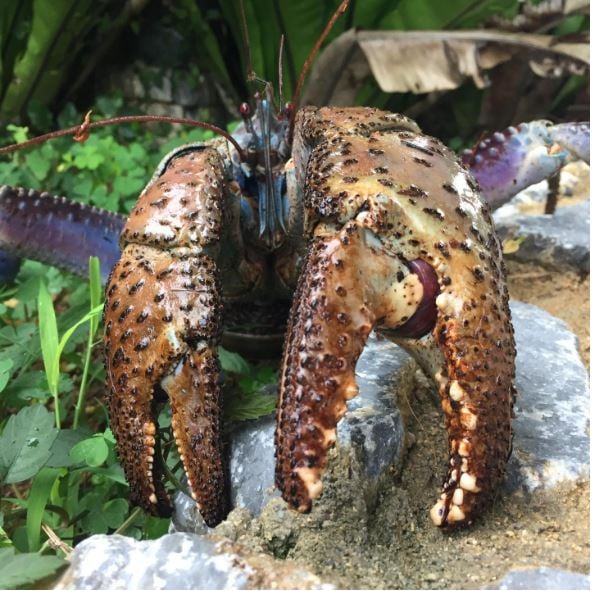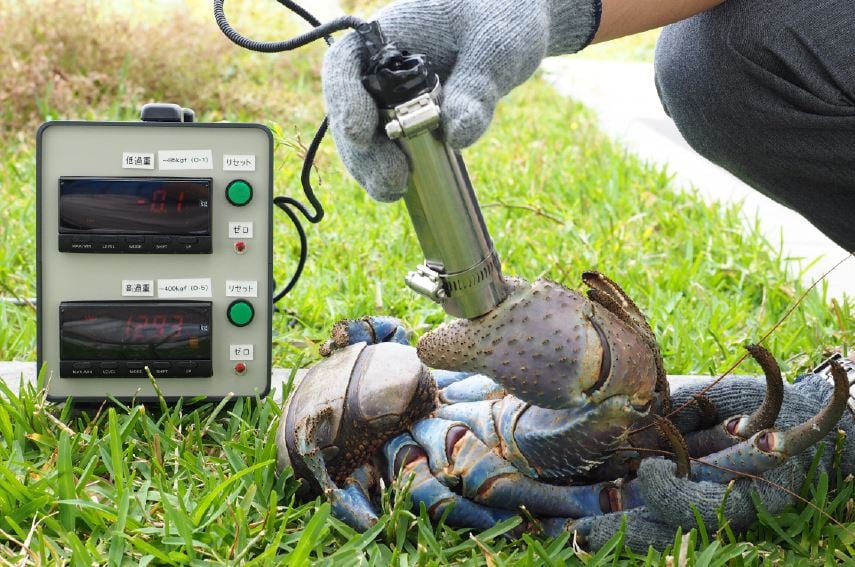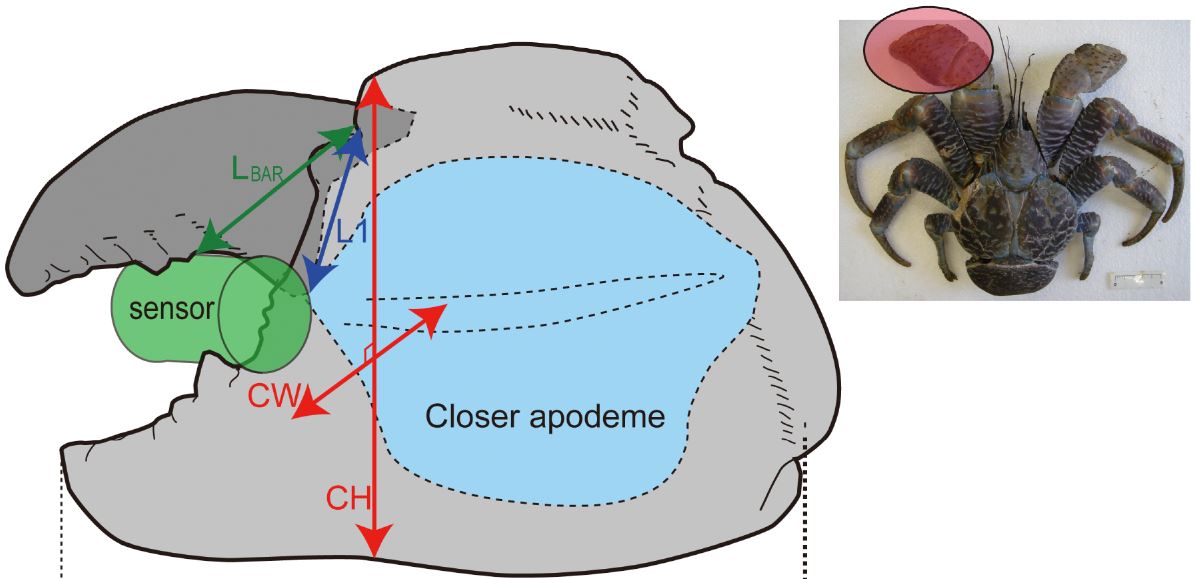The coconut crab has spectacularly powerful claws that can crack open coconuts – hence its name – and could crush your bones in a handshake within seconds. Shin-ichiro Oka, Taketeru Tomita and Kei Miyamoto, all from the Okinawa Churashima Foundation in Japan, carried out a study to determine how strong the claw of a coconut crab really is.
The researchers explained in the journal PLOS ONE that the claws of the coconut crab are incredibly strong – with a pinching force superior to that of any crustacean.
The coconut crab (Birgus latro), also known as the palm thief or robber crab, is a species of terrestrial hermit crab. It is the world’s largest arthropod. It is also remarkably strong.
 This coconut crab weighs 2 kg (4.4 lb). Some of them reach 4 kg (9.0 lb) and can grow up to 1 meter (3 ft 2 in) in length from leg-to-leg. It is found on islands across the Indian and Pacific Oceans. It has an acute sense of smell. Adults feed on seeds, nuts, fruits (including coconuts), and the pith of fallen trees. However, they will also eat carrion opportunistically. (Image: eurekalert.org)
This coconut crab weighs 2 kg (4.4 lb). Some of them reach 4 kg (9.0 lb) and can grow up to 1 meter (3 ft 2 in) in length from leg-to-leg. It is found on islands across the Indian and Pacific Oceans. It has an acute sense of smell. Adults feed on seeds, nuts, fruits (including coconuts), and the pith of fallen trees. However, they will also eat carrion opportunistically. (Image: eurekalert.org)
It can lift up to 28 kilograms (61.7 pounds). It uses its claws to fight and defend itself. The coconut crab also uses its claws to eat coconuts and other foods with extremely hard exteriors.
Before this study, we knew that decapods – ten-legged crustaceans – had the most powerful pinching force relative to their mass. However, nobody knew exactly how strong the coconut crab was.
Coconut crab has mega mighty claws
Shin-ichiro Oka and colleagues were determined to find out. They measured the claws and pinching forces of twenty-nine coconut crabs from Okinawa Island in southern Japan.
 The force was measured using the Sk-MBF-01F device and related sensors. (Image: journals.plos.org)
The force was measured using the Sk-MBF-01F device and related sensors. (Image: journals.plos.org)
As expected, their experiments showed that pinching force increased with body mass. Based on the creatures’ maximum known weight, the maximum pinching force of the coconut crabs’ claws was estimated to be 3,300 newtons.
A newton is a unit of measurement named after the eminent scientists Sir Isaac Newton. It measures force, which is expressed as units of kilogram meter per second squared.
The force of the claws of the coconut crab exceeds both the pinching force of all other crustaceans and the bite force of every land animal on Earth, apart from alligators.
Where they live, these crabs literally have the monopoly on coconuts, because they are the only animals that can break them open.
 Claw measurement used in the study. The sensor was placed in the green area. The measurements used claw width (CW), claw height (CH) and claw length (CL). (Image: journals.plos.org)
Claw measurement used in the study. The sensor was placed in the green area. The measurements used claw width (CW), claw height (CH) and claw length (CL). (Image: journals.plos.org)
In an Abstract preceding the main paper in the journal, the authors wrote:
“The mighty claw is a terrestrial adaptation that is not only a weapon, which can be used to prevent predator attack and inhibit competitors, but is also a tool to hunt other terrestrial organisms with rigid exteriors, aiding in these organisms to be omnivores.”
Citation: “A Mighty Claw: Pinching Force of the Coconut Crab, the Largest Terrestrial Crustacean,” Shin-ichiro Oka, Taketeru Tomita & Kei Miyamoto. PLOS ONE. November 23, 2016. DOI: org/10.1371/journal.pone.0166108.
Video – Coconut crabs
This video has some good footage of the coconut crab, which has the most powerful claws in the world.
